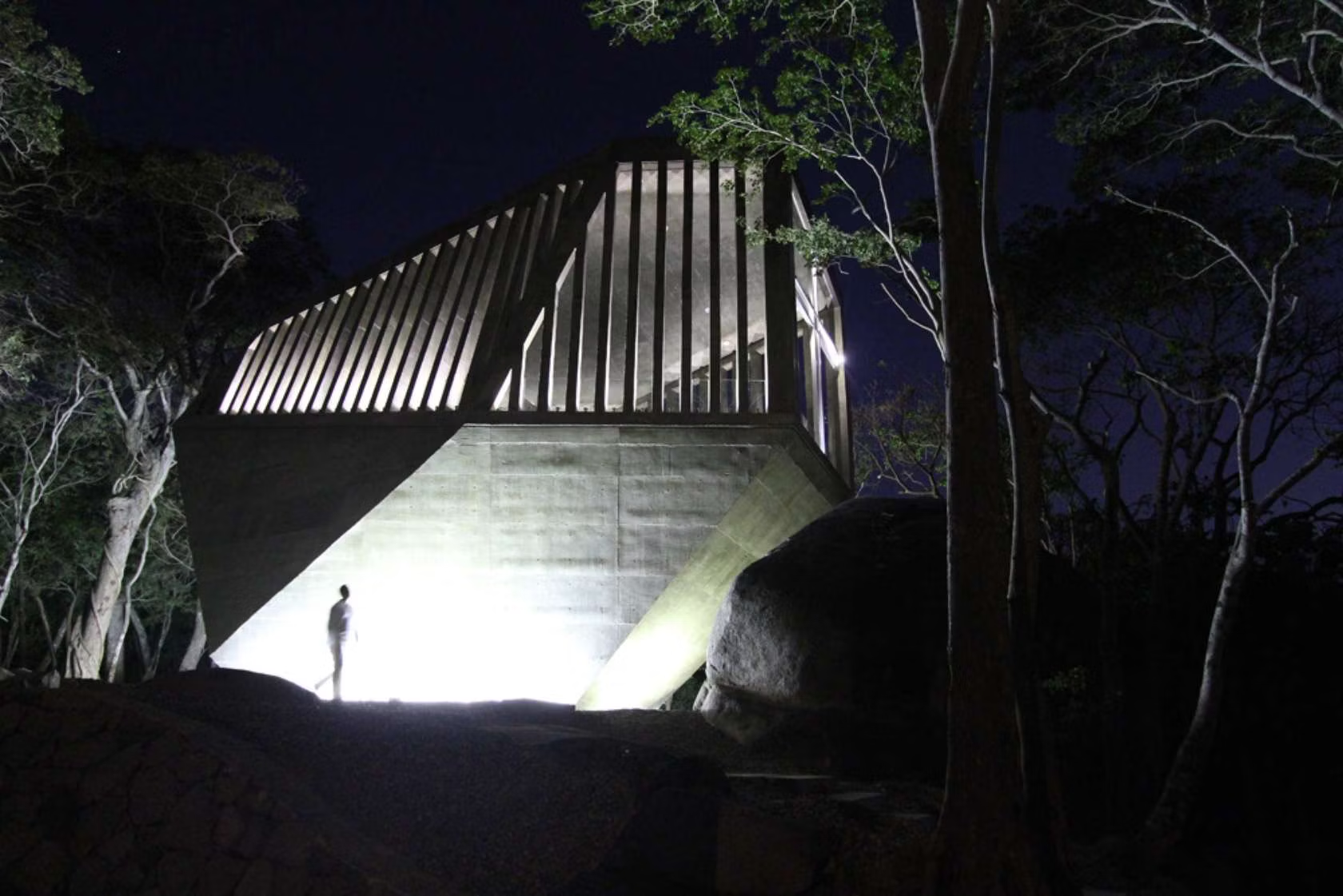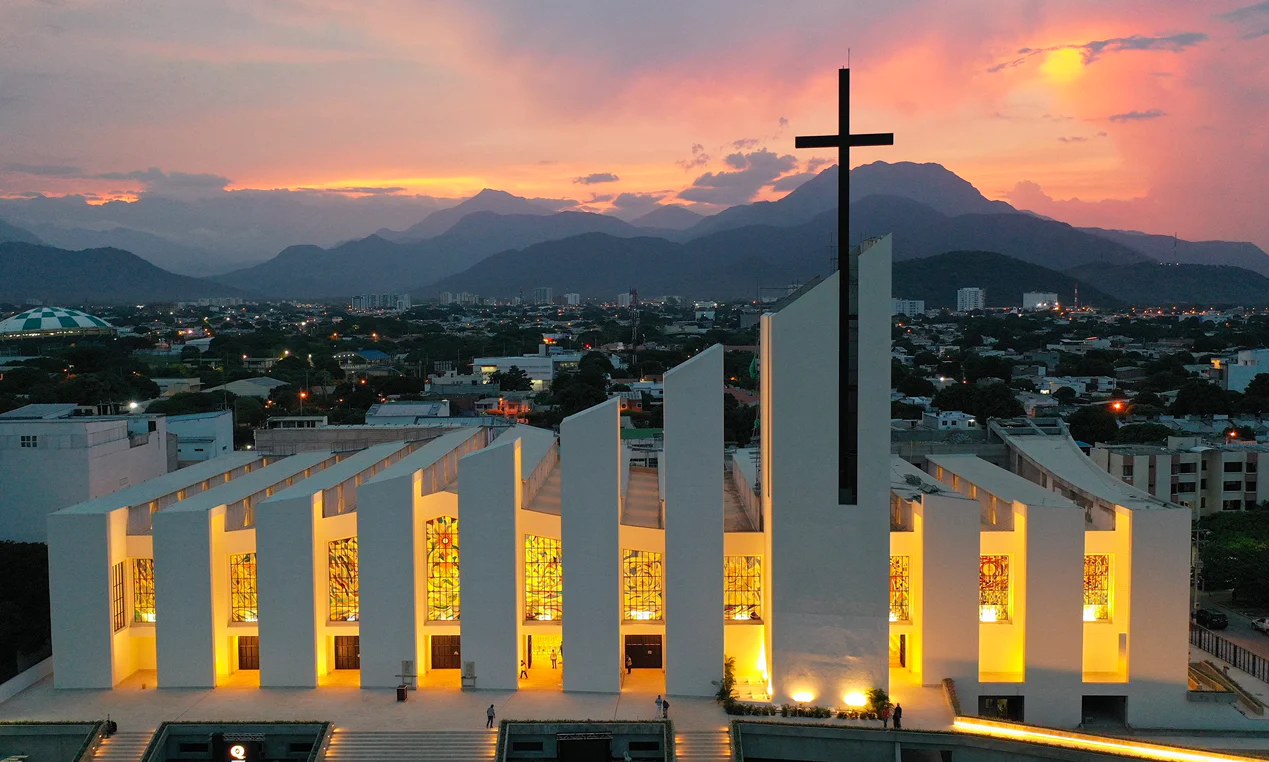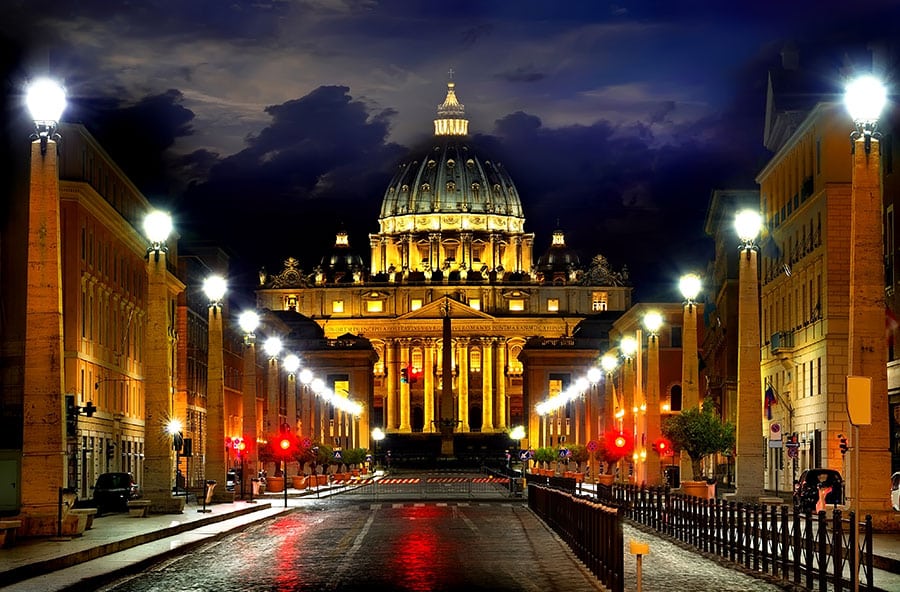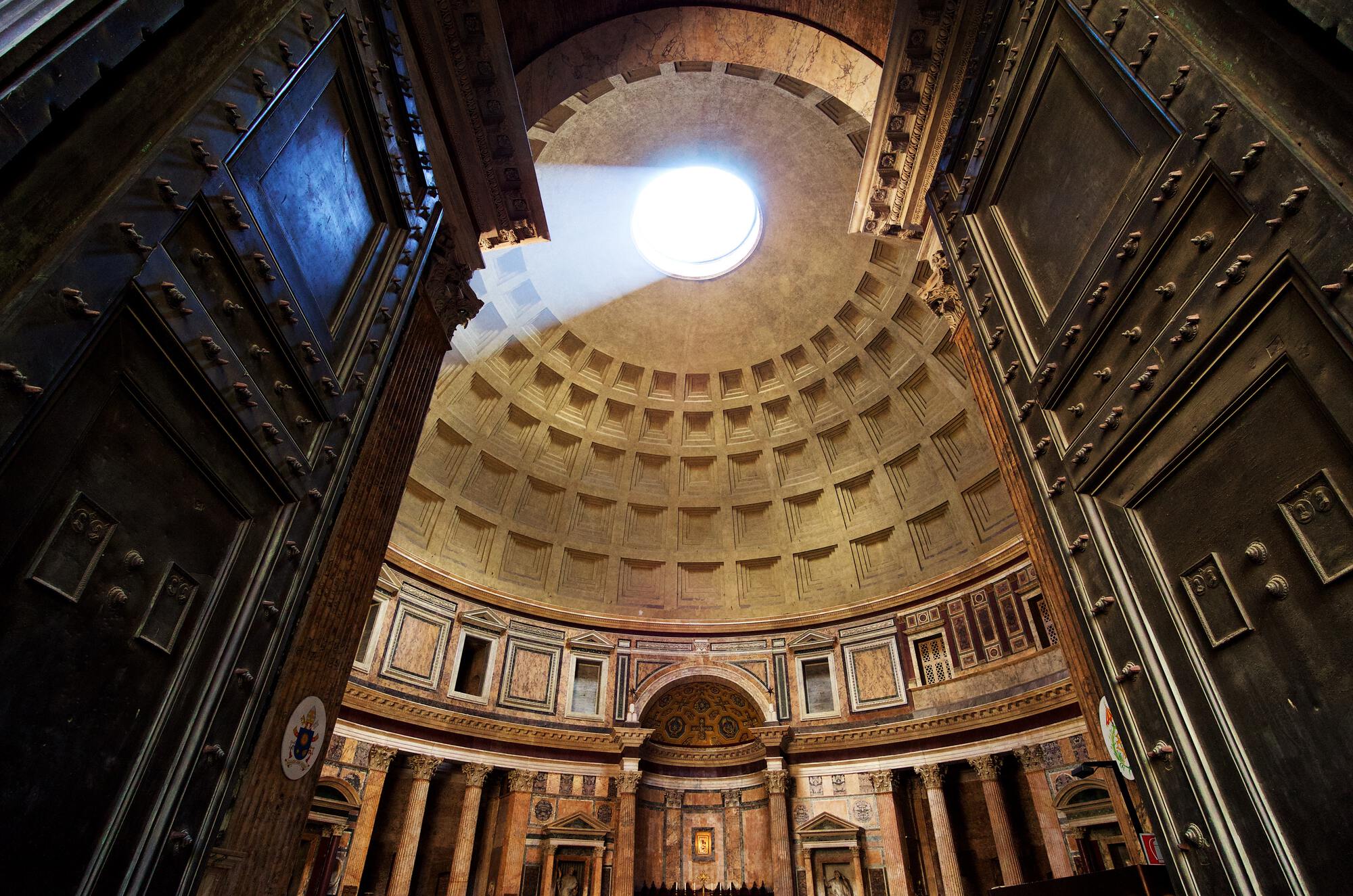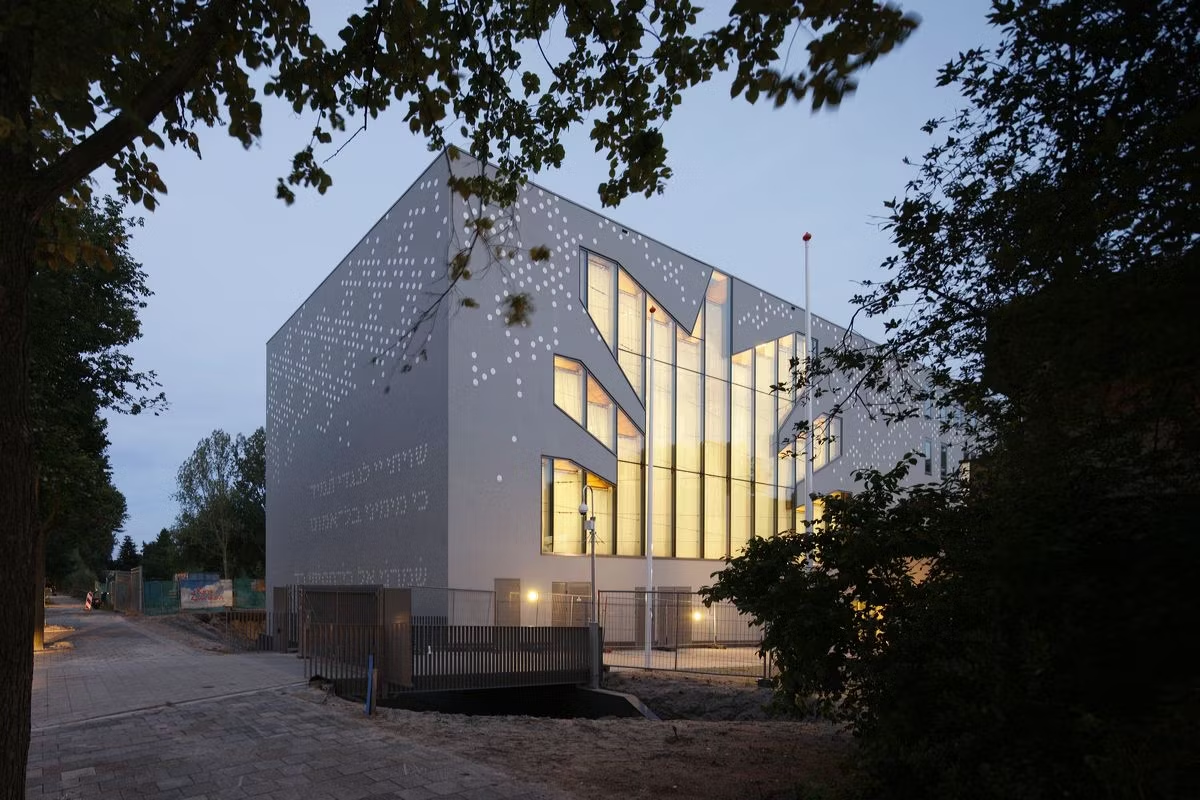The Role Of Light In Religious Spaces
Explore the profound interplay of light in religious spaces, as our in-depth article delves into the symbolism, architectural techniques, and contemporary adaptations shaping this timeless relationship. From the spiritual significance of light in various faiths to the innovative approaches and sustainable practices transforming sacred spaces, uncover the luminous tapestry that weaves tradition and modernity in the realm of religious architecture.
Bernard HorneNov 17, 202323789 Shares321471 Views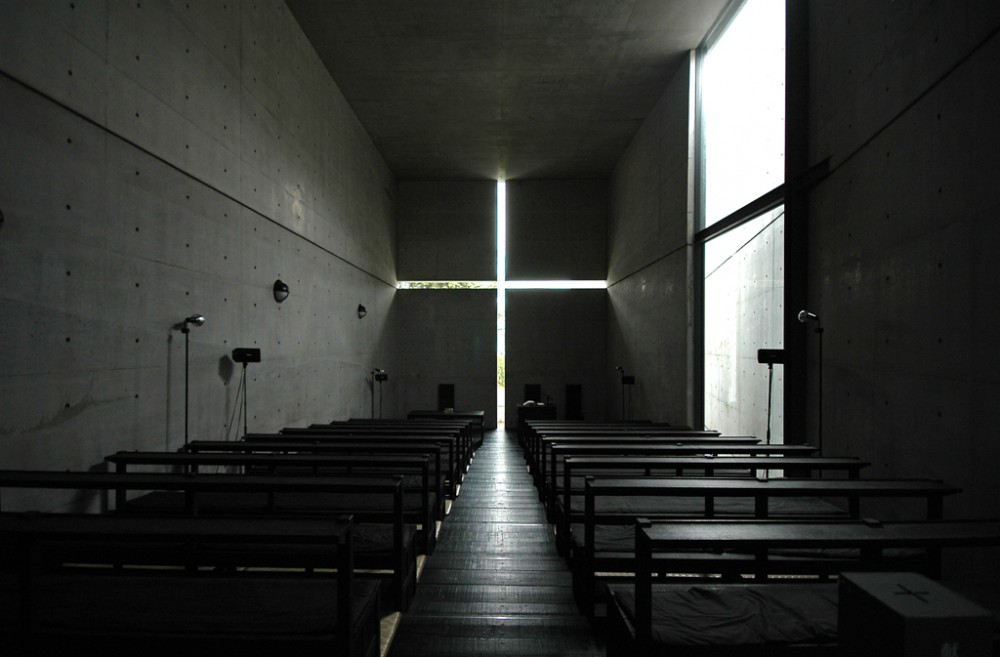

Light plays a profound and symbolic role in the architecture of religious spaces, transcending mere physical illumination to become a metaphor for spiritual enlightenment. From the grand cathedrals of Christianityto the serene temples of Buddhism, the interplay of light and architecture creates an atmosphere that fosters a sense of reverence and connection with the divine. In this exploration, we delve into the significance of light in religious spaces, unraveling its spiritual, aesthetic, and symbolic dimensions.
Illuminating The Sacred - An Introduction
Religious architecture stands as a testament to the profound understanding of the transformative power inherent in light. Far beyond its utilitarian function, the intentional and artful manipulation of both natural and artificial light sources within sacred spaces serves as a conduit for a deeply spiritual experience.
In the harmonious interplay of light and architectural elements, a sacred narrative unfolds, guiding worshippers on a transformative journey of introspection and devotion.
Light As A Spiritual Medium
Within the sacred confines of religious structures, light emerges as more than just a physical illuminator. It becomes a spiritual medium, a metaphysical force that transcends the tangible and reaches into the realms of the divine. Architects and religious leaders, throughout history, have harnessed the ethereal quality of light to craft spaces that not only house religious practices but actively engage worshippers in a dialogue with the sacred.
Beyond Functionality
While light undoubtedly serves functional purposes in illuminating worship spaces, its role extends far beyond mere visibility. It becomes a vehicle for conveying sacred symbolism and evoking emotional responses. The intentional use of light communicates a language of spirituality, using the interplay of brightness and shadow to create a dynamic environment that mirrors the ebb and flow of the spiritual journey.
Enhancing The Religious Experience
In the intentional fusion of light and architectural elements, a profound enhancement of the religious experience unfolds. Whether through the gentle glow of candles during a meditative ceremony or the kaleidoscopic hues filtering through stained glass, worshippers are enveloped in an atmosphere that transcends the mundane. This intentional design not only reflects the values and beliefs of a particular faithbut also invites worshippers to explore the depths of their own spirituality.
Guiding The Spiritual Journey
Central to the marriage of light and religious architecture is its role as a guiding force. Light is strategically employed to direct attention, creating focal points for worship and contemplation. Whether illuminating an intricately carved altar, an ancient scripture, or an awe-inspiring architectural feature, the intentional placement of light guides the worshippers' gaze and, consequently, their spiritual journey within the sacred space.
Dynamic Symbolism
Light within religious architecture is not static; it is a dynamic symbol, mirroring the cyclical nature of spiritual growth and renewal. The rising and setting of the sun, the shifting patterns of daylight, and the ritualistic use of artificial lighting contribute to a symbolism that transcends time. This dynamic interplay of light serves as a visual metaphor for the ever-changing nature of the spiritual voyage.
Invoking Reverence And Awe
In the intentional manipulation of light, a sense of reverence and awe is invoked. Whether through the ethereal glow of natural sunlight streaming through a clerestory window or the dramatic play of shadows in a dimly lit chapel, worshippers are encouraged to pause, reflect, and connect with something greater than themselves. The intentional use of light, then, becomes a catalyst for the deepening of spiritual experiences within the sacred space.
Symbolism Of Light In Religious Contexts
Light, within the context of religious symbolism, transcends its physical nature to become a powerful metaphor for the divine, spiritual enlightenment, and the journey towards illumination.
Light As Divinity
Across diverse religious traditions, light stands as a universal symbol of the divine presence. In Christianity, the metaphor of Jesus as the "light of the world" pervades religious doctrine, and this symbolism is artfully woven into the architecture of Christianspaces.
Whether through the ethereal glow of candles, the brilliance of chandeliers, or the streaming light from carefully positioned windows, the intentional use of light becomes a tangible representation of the sacred.
Hinduism, too, embraces light as a symbol of spiritual illumination, with temples adorned in radiant hues during festivals, reflecting the divine energies believed to permeate the universe. The deliberate incorporation of light into religious architecture serves not only to illuminate physical spaces but also to manifest the divine within the tangible, providing worshippers with a visual and spiritual connection to the sacred narratives of their faith.
Enlightenment And Spiritual Awakening
In the narrative of religious symbolism, light serves as a profound metaphor for the journey from darkness to spiritual awakening.
Buddhism, with its emphasis on enlightenment, employs light as a powerful symbol for the wisdom that dispels the darkness of ignorance. Architectural elements are strategically designed to facilitate this symbolic transition within the religious space. Stained glass windows, with their intricate designs and vibrant colors, become dynamic canvases that capture and refract sunlight, casting a kaleidoscope of hues upon the interior.
Skylights, positioned with intentionality, allow natural light to permeate the sacred space, symbolizing the illumination of consciousness.
Open courtyards, bathed in the warmth of sunlight, become serene spaces for contemplation and meditation. Through these architectural elements, worshippers are guided on a visual and symbolic journey, experiencing firsthand the transformative power of light as it mirrors the profound shift from spiritual darkness to illuminated wisdom.
Architectural Techniques Enhancing The Play Of Light
Architectural ingenuity in religious spaces goes beyond structural design; it extends into the deliberate orchestration of light. These techniques are not merely functional but are carefully crafted to enhance the spiritual experience of worshippers, creating an interplay between the physical and the divine.
Stained Glass Artistry
Stained glass windows emerge as timeless and iconic featuresin religious architecture. Beyond their aesthetic allure, these windows serve as artistic canvases that filter and refract light, casting a kaleidoscope of vibrant hues across interiors. The interplay of light and color creates an ever-changing tableau, symbolizing the dynamic nature of the divine.
Worshippers are captivated by the dance of luminous patterns, each beam of light contributing to a visual narrative that transcends the physical space. In this artistry of illumination, stained glass becomes a conduit for spiritual connection, enhancing the overall worship experience through its mesmerizing representation of the divine in radiant hues.
Skylights And Openings
Strategic positioning of skylights and openings is a deliberate architectural choice to invite the celestial into the sacred. Natural light, thoughtfully channeled through these apertures, bathes the interior in a luminous glow.
This not only reduces dependence on artificial lighting but also establishes a direct connection between the worshippers and the celestial realm. As the sun's intensity shifts throughout the day, the play of light takes on a temporal dimension, mimicking the passage of time and infusing the spiritual atmosphere with a sense of the divine unfolding.
The intentional use of skylights and openings thus transforms the religious space into a dynamic canvas, where light becomes a dynamic participant in the sacred narrative.
Candlelight And Ritual Illumination
Candlelight and ritual illumination constitute a universal practice in religious observance. Beyond their practical function, the warm and flickering glow of candles contributes to an atmosphere of serenity and contemplation. Each flame becomes a symbol, representing the ephemeral nature of lifeand the enduring light of the divine. Ritual lighting becomes a transformative act, engaging worshippers in a sensory experience that transcends the visual.
The play of candlelight not only illuminates physical spaces but also metaphorically dispels spiritual darkness. In this dance of flame, worshippers find a connection to the sacred that goes beyond the visual, resonating with the symbolic power of light in religious rituals.
The Intersection Of Modernity And Tradition
In the dynamic realm of religious architecture, a fascinating intersection occurs between the timeless traditions of spirituality and the cutting-edge innovations of contemporary design. This synthesis of modernity and tradition is particularly evident in the thoughtful approaches to lighting, where technology and sustainability converge to enhance the sacred experience.
Contemporary Approaches To Lighting
In the tapestry of modern religious architecture, designers are embracing innovative lighting technologies to craft immersive and dynamic spaces. The advent of LED lighting stands as a prime example, offering a palette of possibilities for creating transformative atmospheres within religious structures.
LED lights, programmable and customizable, allow for a harmonious choreography of light that adapts to the evolving needs of diverse religious ceremonies and rituals.
Whether it's adjusting the color temperature to evoke a contemplative mood or orchestrating dynamic lighting sequences for celebratory events, contemporary lighting approaches become an integral part of the evolving narrative within sacred spaces. Through these advancements, the sacred is not just illuminated; it is dynamically and intentionally curated, adding a layer of modern sophistication to the spiritual journey.
Sustainable Lighting Practices
As the world grapples with environmental challenges, religious institutions are increasingly incorporating sustainable lighting practices into their architectural designs. This commitment to eco-friendly principles aligns with broader ecological consciousness while reinforcing the connection between the divine and the natural world.
Energy-efficient lighting sources, such as LED and CFL bulbs, are replacing traditional incandescent options, reducing both energy consumption and environmental impact. Moreover, architects are strategically incorporating natural daylighting into religious structures, harnessing the ambient light of the sun to illuminate sacred spaces. This not only serves practical considerations by reducing reliance on artificial lighting but also symbolically connects worshippers with the cyclical rhythms of nature.
The infusion of sustainable lighting practices into religious architecture represents a harmonious marriage of tradition and modernity, where the sacred is not only illuminated but does so in harmony with the ecological ethos of our time.
Temporal Significance Of Light
In the intricate tapestry of religious observance, the significance of light extends beyond mere illumination; it becomes a temporal guide, shaping the rhythm of rituals and celebrations. This interplay between light and time adds a nuanced layer to the sacred experience.
Day And Night Rituals
The cyclical nature of daylight becomes a choreographer of sacred moments within religious spaces. Architectural designs, cognizant of this natural cadence, are tailored to harness the varying qualities of daylight. Daytime ceremonies bask in the radiant glow of natural light, creating an atmosphere that resonates with the energy of the sun.
As daylight transitions into the evening, or even the nocturnal, a subtle shift occurs. Spaces designed for evening rituals gracefully transition to subdued artificial lighting, casting a more contemplative ambiance.
This dynamic interaction with light not only mirrors the earthly realm's connection to celestial cycles but also reinforces the sacredness of time and ritual. Worshippers, enveloped in evolving luminosity, are guided through a temporal journey that aligns with the spiritual rhythms inherent in religious practices.
Festivals And Celebrations
During religious festivals and celebrations, the manipulation of light transforms into a vibrant and joyous expression.
Elaborate lighting displays, both within and outside the religious structure, contribute to the festive atmosphere of communal gatherings. Inside, the glow of carefully arranged lights mirrors the exuberance of the celebration, creating a visual symphony that heightens the senses. Externally, the architectural features of the religious structure may be outlined in radiant brilliance, becoming beacons that guide celebrants and symbolize the jubilation within.
The interplay of light during these occasions transcends mere illumination; it becomes a dynamic and integral part of the celebratory experience. The shared spirituality is amplified as worshippers come together under the festive luminosity, fostering a sense of community and collective joy that transcends the boundaries of individual faith.
Adapting To Diverse Religious Practices
In the mosaic of contemporary society, where diversity and pluralism are celebrated, religious spaces are evolving to accommodate the varied needs of worshippers from different faith traditions. This adaptation goes beyond architectural considerations; it extends into the realm of lighting, where flexibility and inclusivity become guiding principles.
Multi-Faith Spaces
In the hustle and bustle of contemporary urban settings, the emergence of multi-faith spaces reflects a recognition of religious diversity and a commitment to inclusivity. These shared spaces bring together worshippers from various faith traditions under one roof.
However, the challenge lies in creating an environment that caters to the diverse lighting requirements inherent in different religious practices. The solution lies in the implementation of flexible lighting schemes. These schemes are dynamic and adaptable, capable of accommodating a spectrum of rituals and ceremonies.
Whether it's the subdued lighting for contemplative meditation, vibrant hues for joyous celebrations, or focused illumination for specific rituals, the flexibility of lighting in these shared spaces ensures that worshippers from different faiths feel not only welcomed but also accommodated in the diversity of their religious practices.
Universal Design Principles
In the pursuit of inclusivity, architects and designers are integrating universal design principles into the very fabric of religious spaces.
This approach ensures that the environment is accessible and accommodating for all, regardless of physical abilities or visual sensitivities. One crucial aspect of this inclusivity is the consideration of lighting. Worshippers with diverse visual needs, including those with impairments or sensitivities, require spaces that are well-lit and thoughtfully illuminated. Lighting design, in this context, becomes a tool for accessibility.
It involves creating environments where the interplay of light is carefully calibrated to enhance visibility and ensure a welcoming atmosphere for everyone. This commitment to universal design principles in religious spaces reflects not only a dedication to inclusivity but also an acknowledgment of the rich tapestry of worshippers and their unique requirements.
Light In Religious Spaces - FAQs
What Does Light Symbolize In Religion?
Across diverse religious traditions, light serves as a potent symbol, representing the divine presence, spiritual enlightenment, and the transcendent essence of the sacred. A metaphor for wisdom, truth, and the journey toward higher understanding, explore the rich symbolism of light in various faiths. For further insights on creative solutions in architectural spaces, particularly those with historical significance.
The symbolic use of light is deeply embedded in religious texts and rituals, reflecting the belief that light illuminates the darkness of ignorance and represents the presence of the divine within the material world.
Whether it's the Christian concept of Jesus as the "light of the world," the Hindu celebration of light in Diwali, or the Buddhist symbolism of light dispelling ignorance, light is a universal symbol that connects the earthly with the divine.
Why Is Light Important In Churches?
Light holds profound significance in churches, both symbolically and practically. Symbolically, light represents the divine presence of God and the spiritual illumination found in religious teachings.
In Christianity, for example, light is often associated with Christ, who is considered the light of the world. Practically, light plays a crucial role in creating a sacred and contemplative atmosphere within churches.
It enhances the aesthetic beauty of religious art and architecture, guiding worshippers' focus toward sacred symbols and spaces. Additionally, the intentional use of light in churches serves to create an atmosphere conducive to prayer, reflection, and a sense of spiritual connection.
What Is The Natural Light In Church Architecture?
Natural light in churcharchitecture refers to the intentional incorporation of sunlight into the design of religious buildings. This is achieved through architectural elements such as windows, skylights, and clerestories.
The use of natural light serves both symbolic and practical purposes. Symbolically, it represents divine illumination, connecting the worshippers to the spiritual realm. Practically, it reduces the reliance on artificial lighting, creates a dynamic and changing atmosphere throughout the day, and contributes to the overall aesthetic appeal of the church interior.
Many historical churches feature intricate stained glass windows that not only filter natural light but also add a symbolic layer to the visual narrative within the sacred space.
Conclusion
In the realm of religious architecture, light serves as a powerful tool for transcending the physical and embracing the spiritual. The intentional manipulation of light, whether through symbolic stained glass or contemporary LED installations, contributes to the creation of sacred spaces that inspire awe, reverence, and a profound sense of connection with the divine. As religious architecture continues to evolve, the interplay of light and space will remain a timeless and vital aspect, guiding worshippers on their spiritual journey.
Illuminate your spiritual path with the divine brilliance of light in religious spaces.
Latest Articles
Popular Articles
